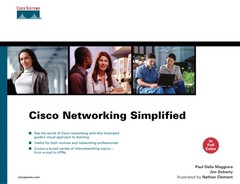
Traditional phone networks have been separate from traditional data networks. Phone calls have different needs from that of data transfer. With a phone, you expect an immediate dial tone when you take it off the hook. Hearing no dial tone indicates the network is down. When you talk, you expect the person on the other end to hear what you say in real time. Otherwise, the conversation is frustratingly incomprehensible (as when talking to someone on a cell phone in an area with horrible reception).
With data networks, you are more tolerant to delays in the network. When browsing a website, you tolerate a 10–20 second delay on occasion. This delay is unacceptable in the voice world.
With the Internet, Transmission Control Protocol/Internet Protocol (TCP/IP), and mechanisms such as quality of service (QoS) becoming the de facto networking protocol and transport, “convergence” can occur. Traditional protocols (such as voice) can converge (or tunnel) through an IP network.
Today’s networks can ensure that voice traffic receives the high priority it requires to provide a real-time conversation. Now that bandwidth abounds on the Internet and corporate networks, they can also transmit video (which has similar traffic characteristics as voice, except a greater volume).
Traditional functions such as videoconferencing, telephony, call centers, and video transmission can now converge onto IP networks, creating new possibilities. In Part II, you learn why we can talk on the phone, participate in conference calls, and watch movies over the Internet.
